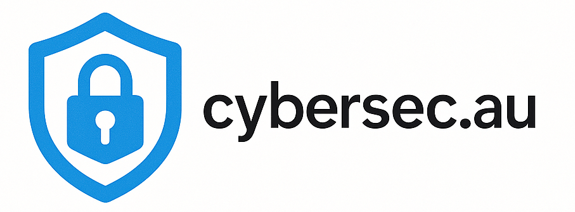Zero-day vulnerabilities are security flaws in software that are unknown to the vendor and security community. These vulnerabilities represent one of the most dangerous cyber threats because they can be exploited before patches are available, making traditional security measures ineffective against them.
🕳️ Zero-Day Timeline
Day -X
Vulnerability exists in software but is unknown
Day 0
Vulnerability discovered by attacker or researcher
Day 0+
Exploit developed and potentially used in attacks
Patch Day
Vendor releases patch to fix vulnerability
Types of Zero-Day Threats
Zero-Day Vulnerabilities
Unknown security flaws in software or systems:
- Software bugs: Programming errors that create security weaknesses
- Design flaws: Architectural issues in software design
- Configuration errors: Default settings that create vulnerabilities
- Protocol weaknesses: Flaws in communication protocols
Zero-Day Exploits
Code or techniques that take advantage of zero-day vulnerabilities:
- Proof of concept: Demonstration that vulnerability can be exploited
- Weaponized exploits: Fully functional attack code
- Exploit kits: Automated tools for deploying exploits
- Advanced persistent threats: Sophisticated attacks using zero-days
Zero-Day Attacks
Actual attacks using zero-day exploits:
- Targeted attacks: Specific organizations or individuals
- Mass exploitation: Widespread attacks against vulnerable systems
- Supply chain attacks: Compromising software before distribution
- Nation-state operations: Government-sponsored cyber operations
Why Zero-Days Are So Dangerous
No Available Patches
Traditional patch management cannot protect against unknown vulnerabilities:
- Unknown to vendors: Software makers unaware of the flaw
- No security updates: Patches don't exist yet
- Signature gaps: Antivirus cannot detect unknown exploits
- Defense bypass: Exploits designed to evade security controls
High Success Rates
Zero-day attacks often succeed because:
- Element of surprise: Defenders unprepared for unknown threats
- Limited detection: Security tools lack signatures or rules
- Rapid exploitation: Attackers move quickly before discovery
- Privilege escalation: Often provide high-level system access
Zero-Day Attack Examples
Notable Zero-Day Attacks
Stuxnet (2010)
- Target: Iranian nuclear facilities
- Zero-days used: 4 different Windows vulnerabilities
- Impact: Physical damage to centrifuges
- Attribution: Nation-state attack
WannaCry (2017)
- Target: Global organizations including healthcare
- Zero-day used: Windows SMB vulnerability (EternalBlue)
- Impact: 300,000+ computers infected worldwide
- Australian impact: Multiple organizations affected
SolarWinds (2020)
- Target: Government agencies and enterprises
- Method: Supply chain compromise with zero-day techniques
- Impact: 18,000+ organizations potentially affected
- Duration: Undetected for months
Defending Against Zero-Day Threats
Behavioral Detection
Focus on detecting malicious behavior rather than known signatures:
- Anomaly detection: Identify unusual system or network behavior
- Behavioral analysis: Monitor for suspicious process activities
- Machine learning: AI-powered detection of unknown threats
- Sandboxing: Analyze suspicious files in isolated environments
Defense in Depth
Multiple layers of security to limit zero-day impact:
- Network segmentation: Limit lateral movement after compromise
- Least privilege access: Minimize potential damage from compromised accounts
- Application control: Prevent unauthorized software execution
- Monitoring and logging: Comprehensive activity monitoring
Threat Intelligence
Stay informed about emerging threats:
- Threat feeds: Real-time intelligence about new threats
- Vulnerability databases: Monitor CVE publications and updates
- Security research: Follow security researcher findings
- Industry sharing: Participate in threat intelligence sharing
Zero-Day Response Strategies
Immediate Response
Actions to take when zero-day attacks are suspected:
- Isolate affected systems: Prevent spread to other systems
- Preserve evidence: Maintain forensic evidence for analysis
- Activate incident response: Follow incident response procedures
- Notify stakeholders: Inform relevant parties about the incident
- Engage experts: Contact cybersecurity specialists for assistance
Mitigation Strategies
Temporary measures while waiting for patches:
- Workarounds: Implement temporary fixes or configuration changes
- Compensating controls: Additional security measures to reduce risk
- System isolation: Disconnect vulnerable systems from networks
- Enhanced monitoring: Increase surveillance of vulnerable systems
Zero-Day Prevention Best Practices
Proactive Security Measures
- Regular security assessments: Penetration testing and vulnerability scans
- Security architecture review: Regular evaluation of security design
- Threat modeling: Systematic analysis of potential attack vectors
- Security training: Keep security teams updated on latest threats
Technology Solutions
- Next-generation antivirus: Behavioral-based endpoint protection
- Endpoint Detection and Response: Advanced endpoint monitoring
- Network monitoring: Comprehensive network traffic analysis
- Application security: Runtime application self-protection (RASP)
Working with Zero-Day Defense Specialists
Defending against zero-day threats requires advanced expertise and technology. Many Australian businesses partner with cybersecurity specialists like Affinity MSP for zero-day protection including:
- Advanced threat detection and behavioral analysis
- 24/7 monitoring for unknown threats
- Incident response for zero-day attacks
- Threat intelligence and early warning systems
- Security architecture design for zero-day resilience
Protect Against Unknown Threats
Zero-day vulnerabilities represent the ultimate cybersecurity challenge. Get expert guidance on defending against unknown threats from Australia's cybersecurity specialists.
Get Advanced Threat Assessment